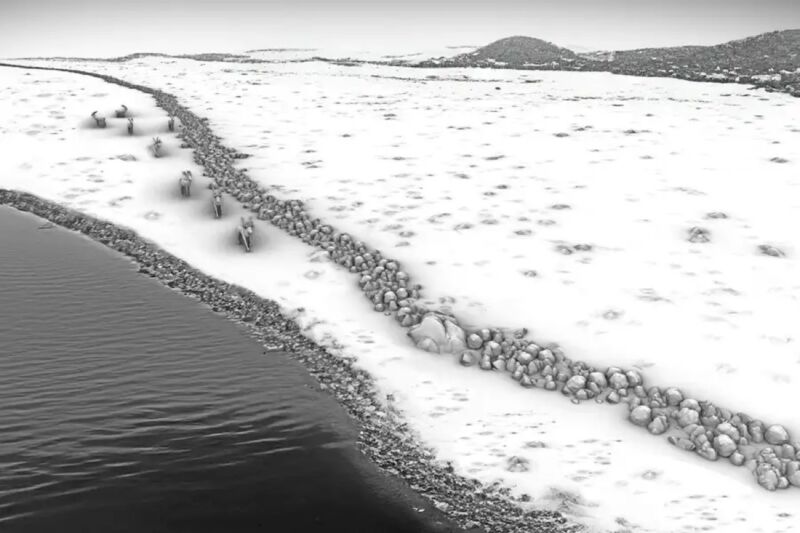Scientists found a Stone Age megastructure submerged in the Baltic Sea

Enlarge / Graphical reconstruction of a Stone Age wall as it may been used: as a hunting structure in a glacial landscape. (credit: Micha Grabowski)
In 2021, Jacob Geersen, a geophysicist with the Leibniz Institute for Baltic Sea Research in the German port town of Warnemunde, took his students on a training exercise along the Baltic coast. They used a multibeam sonar system to map the seafloor about 6.2 miles (10 kilometers) offshore. Analyzing the resulting images back in the lab, Geersen noticed a strange structure that did not seem like it would have occurred naturally.
Further investigation led to the conclusion that this was a manmade megastructure built some 11,000 years ago to channel reindeer herds as a hunting strategy. Dubbed the "Blinkerwall," it's quite possibly the oldest such megastructure yet discovered, according to a new paper published in the Proceedings of the National Academy of Sciences-although precisely dating these kinds of archaeological structures is notoriously challenging.
As previously reported, during the 1920s, aerial photographs revealed the presence of large kite-shaped stone wall mega-structures in deserts in Asia and the Middle East that most archaeologists believe were used to herd and trap wild animals. More than 6,000 of these "desert kites" have been identified as of 2018, although very few have been excavated. Last year, archaeologists found two stone engravings-one in Jordan, the other in Saudi Arabia-that they believe represent the oldest architectural plans for these desert kites.